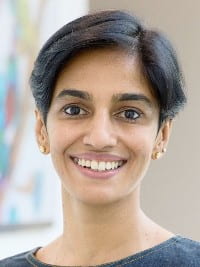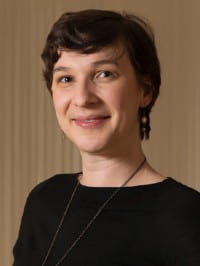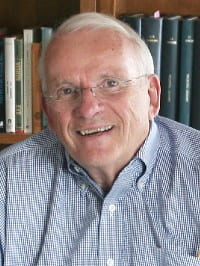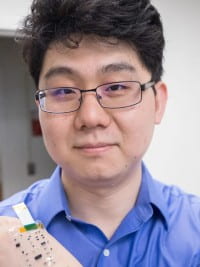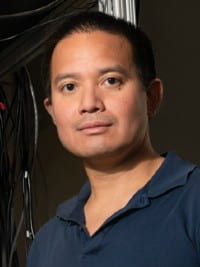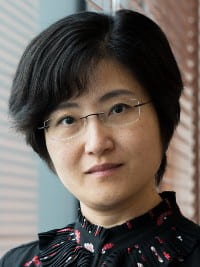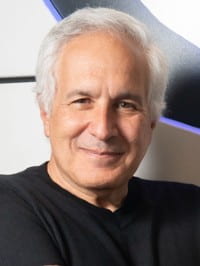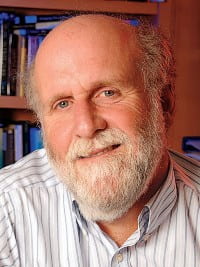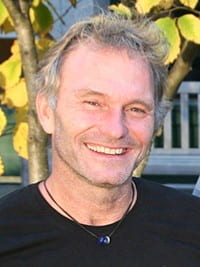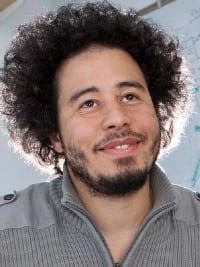The Center for Brain Science at Harvard University functions as a dynamic and highly interdisciplinary hub for neuroscience research. The collective expertise of its faculty spans a broad spectrum of research domains, reflecting a holistic approach to understanding the complexities of the nervous system.
The research conducted by the faculty members of Harvard University’s Center for Brain Science represents a formidable and cohesive effort to unravel the complexities of the nervous system. The collective portfolio underscores a profound commitment to interdisciplinary inquiry, integrating diverse fields from molecular biology and genetics to physics, engineering, and computer science. This convergence of expertise enables a multi-scale approach to brain science, addressing fundamental questions from the inner workings of individual cells and synapses to the emergent properties of complex behaviors and cognitive functions.
A defining characteristic of CBS research is its strategic embrace of computational and artificial intelligence methodologies. This is not merely an application of existing tools but a reciprocal relationship where biological principles inform the design of novel AI systems, and AI frameworks provide new avenues for testing hypotheses about brain function. This emphasis positions CBS at the forefront of the emerging “Neuro-Inspired AI” paradigm, indicating a deliberate institutional direction to contribute significantly to both fundamental neuroscience and the future development of intelligent systems. The sustained investment in advanced technological innovations, from sophisticated imaging techniques to bioelectronic interfaces and virtual reality systems, further amplifies the center’s capacity for groundbreaking discoveries.
In essence, CBS faculty are collectively advancing the understanding of brain function, developing cutting-edge technologies, and actively shaping the intellectual landscape at the intersection of natural and artificial intelligence. Their work addresses critical challenges in neurodegenerative and neuropsychiatric diseases, offering pathways for therapeutic interventions and new insights into human cognition and behavior.
Broad Research Domains and Interdisciplinary Strengths
Research within CBS encompasses a wide array of topics, including molecular and cellular neurobiology, neural development and plasticity, sensory processing (vision, olfaction, touch), motor control, learning and memory, decision-making, and the neural basis of behavior. A significant strength of the center lies in the integration of these traditionally distinct areas, fostering a systems-level understanding rooted in fundamental biological mechanisms. Many faculty members hold affiliations with multiple departments, such as Molecular & Cellular Biology, Psychology, Applied Mathematics, Engineering and Applied Sciences, Stem Cell and Regenerative Biology, and Neurobiology. This widespread departmental cross-pollination underscores the inherently interdisciplinary nature of modern brain science, emphasizing collaboration across diverse scientific disciplines.
Common Experimental Models, Computational Approaches, and Technological Innovations
The faculty at CBS employs a diverse array of experimental models, computational methodologies, and technological innovations to advance their research.
- Model Systems: Researchers utilize a variety of model organisms, including mice , Drosophila melanogaster (fruit flies) , larval zebrafish , and Caenorhabditis elegans (nematode worms). These models are selected for their genetic tractability, simpler neural circuits, and relevance to conserved biological principles, enabling deep mechanistic investigations. For instance, Benjamin de Bivort’s work on Drosophila explores behavioral differences in genetically identical individuals , while Florian Engert’s laboratory uses larval zebrafish to build multi-level pictures of simple neural circuits. Human studies, often involving neuroimaging and behavioral assays, complement these animal models, as seen in the research of Randy Buckner on human brain networks , Joshua Greene’s studies of moral thinking , Talia Konkle’s work on visual representation , Elizabeth Phelps’s research on emotion and memory , Daniel Schacter’s investigations into human memory , and Leah Somerville’s focus on adolescent brain development.
- Computational and AI Integration: A pervasive theme across CBS research is the extensive reliance on computational neuroscience, machine learning, and artificial intelligence. These advanced tools are employed not only for the analysis of large datasets but also as frameworks for developing theoretical models of brain function and for inspiring new AI architectures. This convergence is explicitly supported by the Kempner Institute, with several CBS faculty members holding joint appointments or affiliations, including Demba Ba , Sam Gershman , Cengiz Pehlevan , Kanaka Rajan , and Haim Sompolinsky. This strong, explicit, and multi-faceted integration of AI and machine learning methodologies represents a deliberate, high-level strategic direction for CBS. The aim is to position the center at the forefront of understanding intelligence, both natural and artificial. This approach suggests a future where these fields are increasingly inseparable, driving new discoveries in both domains. The consistent application of computational methods to elucidate principles of computation in the brain , uncover unifying theories about the foundations of natural and artificial intelligence , and build biologically-inspired artificial intelligence demonstrates a strategic commitment to this interdisciplinary frontier.
- Technological Innovations: The faculty at CBS are at the forefront of developing novel experimental techniques, which are crucial for probing neural activity and connectivity at unprecedented scales and resolutions. Examples include Adam Cohen’s development of fluorescent voltage-indicating proteins for optical mapping of neural activity , Jeff Lichtman’s pioneering of “Brainbow” technology for distinguishing individual neurons and automated electron microscopy for large-scale neural circuit reconstruction , and Xiaowei Zhuang’s work on single-molecule and super-resolution imaging methods. Furthermore, researchers are developing virtual reality systems for behavioral studies, as exemplified by Christopher Harvey’s work with mice navigating visual virtual environments , and sophisticated bioelectronic interfaces, such as those developed by Donhee Ham for CMOS-bio interfaces in neuroscience , Jia Liu’s soft bioelectronics for brain-machine interfaces , and Shriya Srinivasan’s human-machine integration research for neuroprosthetics. These technological advancements are foundational to the center’s ability to conduct cutting-edge neuroscience research.
This deep integration of AI and neuroscience, particularly the reciprocal relationship where biological principles inform AI design and AI models test hypotheses about brain function, defines a new frontier beyond traditional computational neuroscience. This progression into “Neuro-Inspired AI” or “Artificial General Intelligence” research implies that CBS aims to contribute not only to understanding the brain but also to shaping the next generation of intelligent systems, with significant societal and technological impact. The focus on thermodynamic theory of generalization and feature learning in wide deep networks, concept representation, and few-shot learning in artificial systems and brain hierarchies exemplifies this forward-looking approach, aiming to leverage biological insights for advanced AI development.
Detailed Faculty Research Profiles
This section provides a detailed summary of the primary research areas, key themes, methodological approaches, and significant contributions of each CBS faculty member, presented alphabetically.
- Paola Arlotta Paola Arlotta’s primary research areas revolve around understanding the molecular laws that govern the birth, differentiation, and assembly of clinically relevant neuron types within the cerebral cortex. Her laboratory specifically focuses on neural progenitors and stem cells, investigating their differentiation into distinct types of projection neurons and the subsequent establishment of their interactions with inhibitory interneurons to form functional cortical microcircuitry. A key theme in her work is the definition of molecular pathways that direct corticospinal neuron specification and early differentiation during corticogenesis. This is particularly significant due to the clinical relevance of corticospinal neurons, which selectively degenerate in conditions such as Amyotrophic Lateral Sclerosis (ALS), Hereditary Spastic Paraplegia (HSP), and Primary Lateral Sclerosis (PLS). The Arlotta lab employs a range of methodological approaches, including molecular profiling to identify key transcriptional, epigenetic, and proteomic changes, as well as experimental techniques like ultrasound-guided injections in developing mouse embryos, in utero electroporation, and FACS purification of distinct neuron types. A major contribution of her research involves exploring the possibility of directing pluripotent stem cells (iPS cells) to regenerate corticospinal neurons, highlighting a high-impact translational direction aimed at therapeutic interventions for neurodegenerative diseases. Her research interests broadly encompass Cell Biology of Neurons & Glia, Development & Plasticity, Neuropathology & Disease, and Synapse Function & Plasticity, utilizing techniques such as Biochemical/Protein Chemistry, Electrophysiological, Imaging, Molecular Biological and Genetic, and Neuronal Tissue and Cell Culture.
- Demba Ba Demba Ba’s primary research areas include computational neuroscience, model-based deep learning, and signal processing. A central theme in his recent research involves examining the intricate connection between sparse, structured signal representations and artificial neural networks. This exploration is not merely theoretical; he actively leverages this connection to develop self-interpretable artificial intelligence systems and to elucidate the fundamental principles of computation within the human brain. His laboratory, the Computation, Representation, and Inference in Signal Processing Group, specifically uses artificial neural networks and deep learning to understand signal processing in the human brain and to develop explainable artificial intelligence. Dr. Ba’s contributions extend to both the Science of AI and AI and the Brain research areas. He holds the prestigious position of Gordon McKay Professor of Electrical Engineering at the Harvard John A. Paulson School of Engineering and Applied Sciences (SEAS) and was named Director of Undergraduate Studies in Bioengineering in 2020. His academic achievements are recognized through his designation as a 2016 Fellow in Neuroscience by the Alfred P. Sloan Foundation and as a 2021 recipient of the Roslyn Abramson Award for Outstanding Undergraduate Teaching by the Harvard Faculty of Arts and Sciences.
- Nicholas Bellono Nicholas Bellono’s primary research focuses on how organisms adapt to detect and respond to salient environmental signals, considering their specific ecological or behavioral contexts. The Bellono lab adopts a curiosity-based approach, which involves exploiting specialized and often unconventional biological systems to uncover fundamental concepts. These concepts include signal transduction and amplification, ion channel biophysics, and evolutionary mechanisms. The overarching aim of their research is to understand how these molecular mechanisms ultimately impact organismal physiology and behavior. His research interests are categorized under Receptors & Ion Channels and Systems & Integrative Neuroscience, employing techniques such as behavioral assays, electrophysiological recordings, and microscopic or functional imaging. A significant contribution from his lab is exemplified by their work on the “Evolution of novel sensory organs in fish with legs”. This research highlights how sea robins, fish with unique leg-like appendages, utilize these structures as bona fide sense organs to localize buried prey, thereby demonstrating a remarkable adaptive evolutionary strategy. This work underscores the lab’s success in revealing fundamental biological principles through the study of unusual and specialized systems.
- Richard Born Richard Born’s primary research area is cortical visual processing in nonhuman primates. His laboratory maintains a particular interest in the nature of cortico-cortical feedback, investigating how different areas of the cortex communicate and influence visual information processing. His research encompasses a wide range of topics and techniques within neuroscience and systems neuroscience. These include neuroanatomical tract-tracing, studies on visual fields, superior colliculi, and contrast sensitivity, as well as the application of stochastic processes and statistical data interpretation. He also investigates aspects of visual perception such as depth perception, binocular vision, form perception, and ocular adaptation, often using electrophysiological methods and implanted electrodes. His work has explored neural networks and the role of corticocortical feedback in alert macaques, utilizing techniques like 3D reconstruction, neural tracers, and DTI tractography. A significant contribution stems from his pioneering work in visual neurophysiology, particularly during his time with Professors David Hubel and Margaret Livingstone. He has also served as Director of the Harvard PhD Program in Neuroscience from 2009 to 2014 and has been recognized with fellowships from the Klingenstein, Whitehall, Kirsch, and Lefler Foundations.
- Randy Buckner Randy Buckner’s primary research areas involve exploring the organization and function of large-scale human brain networks that contribute to high-level cognition. His laboratory utilizes a combination of behavioral, neuroimaging, and computational approaches to characterize these brain networks. A key theme in his work is understanding how genetic variation gives rise to differences in network organization and behavior, including the dysfunction observed in neuropsychiatric illnesses. Significant contributions include a comprehensive characterization of the organization of the cortex, striatum, and cerebellum, with a particular focus on brain association networks critical for memory and cognitive control. Building upon this understanding of normal organization, his research also explores disturbances in network organization across various neuropsychiatric and neurodegenerative illnesses. Current projects aim to detect dysfunction even before clinical symptoms appear in individuals at genetic risk for illness. More recently, his work has shifted towards exploring the detailed organization of individual brains and how this organization varies across people and changes over time, a focus considered critical for clinical translation. Dr. Buckner is the Director of the Psychiatric Neuroimaging Research Division at Massachusetts General Hospital and is affiliated with the Center for Brain Science. He is also a SFARI Investigator and a member of the SFARI Scientific Review Board. His work on quantifying the effects of 16p11.2 copy number variants on brain structure stands as a notable contribution.
- Adam Cohen Adam Cohen’s primary research areas lie at the intersection of physics, chemistry, and biology, where his lab is dedicated to developing new physical tools for studying molecules and cells. A significant contribution from his laboratory is the development of fluorescent voltage-indicating proteins. These innovative tools enable optical mapping of neural activity, which has opened avenues for all-optical electrophysiology and large-scale mapping of brain activity. Another key theme in his research involves the fundamental aspects of chiral light-matter interactions. His lab has theoretically predicted and experimentally demonstrated the existence of “superchiral” light, expanding the understanding of electromagnetic fields. Furthermore, he invented the Anti-Brownian Electrokinetic trap (ABEL trap), capable of trapping and manipulating individual fluorescent molecules in solution at room temperature. His research also delves into chemical reactions exquisitely sensitive to small magnetic fields, a consequence of quantum coherence in liquid environments. The unifying principle across his diverse research is the pursuit of precise control over the classical and quantum states of molecules under biological conditions. Dr. Cohen holds PhD degrees in theoretical physics from Cambridge (UK) and experimental biophysics from Stanford. His contributions have been widely recognized, including being named one of the top 35 US technological innovators under 35 by Technology Review Magazine, one of Popular Science’s “Brilliant Ten” top young scientists, and receiving an NIH New Innovator Award, a Presidential Early Career Award for Scientists and Engineers (PECASE), the Blavatnik National Award in Chemistry, and the American Chemical Society Pure Chemistry Award. He also founded Q-State Biosciences, a company focused on new diagnostics and therapies for neuropsychiatric and neurodegenerative diseases. His research areas include Biophysics, Chemical Biology, Physical/Chemical Physics, and Theoretical approaches.
- S. Robert Datta S. Robert Datta, a Professor of Neurobiology at Harvard Medical School, primarily focuses his research on understanding how the brain enables animals to successfully interact with their natural environment, a process mediated by sensation and movement. His laboratory investigates how the brain constructs natural, self-directed behaviors, examining these processes across timescales ranging from minutes to a lifetime. A key theme involves addressing how various factors, such as genes, sensory cues, environmental affordances, and social partners, influence the structure and meaning of movement. Given the critical role of smell for rodents, a significant portion of his research is dedicated to the olfactory system. He explores how the mouse brain encodes information about smells at every neural station, from peripheral sensors to the allocortex, where olfactory information intersects with emotion, memory, and cognition. Dr. Datta integrates action and sensation by studying neurobehavioral relationships within complex environments designed to dynamically challenge animals over extended periods. His work has direct relevance to a number of neuropsychiatric and neurodegenerative disorders. He is an Associate Member of the Broad Institute and a Principal Investigator in the Italian Institute of Technology/Harvard Medical School joint program in the neurosciences. Dr. Datta has received numerous accolades, including the NIH New Innovator Award, the Burroughs Welcome Career Award in the Medical Sciences, the Alfred P. Sloan Research Fellowship, the Searle Scholars Award, the Vallee Young Investigator Award, the McKnight Endowment Fund Scholar Award, and has been named a fellow of the National Academy of Science/Kavli Scholars program. His funded research includes projects on defining the role of MS4A genes in Alzheimer’s Disease and assessing the links between MS4A risk genes, microglia, and Alzheimer’s Disease.
- Benjamin de Bivort Benjamin de Bivort’s laboratory primarily aims to understand the neurobiological mechanisms underlying ecologically and evolutionarily relevant behaviors. His research leverages techniques from circuit neuroscience, comparative genomics, and ethology, with a specific focus on fruit flies from the genus Drosophila. A key theme in his work involves investigating behavioral differences observed even among genetically identical individual flies. His lab has discovered that individual flies exhibit unique behavioral tendencies, which persist throughout their lives, suggesting a form of “fly personality.” Their research has identified specific genes and neural circuits that regulate the extent of this inter-individual variability, indicating that behavioral variability is under active control. A long-term objective is to determine how subtle genetic differences between related strains and species alter the physiology and information processing of neural circuits, leading to observed behavioral differences. To achieve accurate behavioral characterization, the lab emphasizes high-throughput quantitative methodologies, including an imaging rig that automatically records the leg positions of a single fly running on a floating ball. This data is then used with supervised and unsupervised classification algorithms to characterize behavior and identify motor primitives and central pattern generators. Dr. de Bivort’s research interests include Development & Plasticity, Gene Expression, and Synapse Function & Plasticity, employing behavioral, computational, imaging, molecular biological and genetic, and non-mammalian systems techniques. His significant contributions include pioneering work on “fly personality” and the development of novel behavioral instruments such as the Y-maze Array, SlowPhotoBox, FlyVac, and LegTracker. His publications also highlight neural mechanisms of parasite-induced “summiting behavior” in “zombie” Drosophila.
- Michael Do Michael Tri Hoang Do, an Associate Professor of Neurology at Boston Children’s Hospital, leads a research group that investigates the multifaceted influence of light on mammals. His primary research areas include how the retina produces visual information, how this information is processed within the brain for diverse functions such as perception and circadian rhythm regulation, and how the visual system is configured to meet the specific needs of different species. The research is conducted quantitatively, employing electrophysiological and imaging techniques both in vitro and in vivo. A key theme in his approach involves a comprehensive search for mechanisms at the molecular, cellular, and circuit levels that are vital to the animal, followed by rigorous comparisons across these levels to understand how increases in complexity lead to gains in sensitivity, dynamic range, adaptability, and robustness. His research interests span Cell Biology of Neurons & Glia, Development & Plasticity, Receptors & Ion Channels, Synapse Function & Plasticity, and Systems & Integrative Neuroscience. The lab utilizes various techniques including electrophysiological, imaging (microscopic and/or functional), neuroanatomical, and neuronal tissue and cell culture. While specific “significant contributions” are not explicitly listed as separate items, his detailed research focus implies substantial contributions to understanding the fundamental processes of visual information production and processing in the mammalian brain, the mechanisms underlying various visual functions, and the adaptive configurations of the visual system across species.
- John Dowling John Dowling, Gordon and Llura Gund Professor of Neurosciences, Emeritus, has primarily focused his research on the vertebrate retina, viewing it as an accessible part of the central nervous system that offers insights into broader neural mechanisms throughout the brain. Historically, his research has encompassed the cellular structure, function, pharmacology, genetics, and synaptic interactions of retinal cells, as well as the functional organization of the retina. He also investigated the development and genetics of the vertebrate retina using zebrafish, including the role of retinoic acid in early eye and photoreceptor development, and developed behavioral tests to isolate visual system mutations. Although his laboratory has closed, Dr. Dowling is currently engaged in a significant collaborative project: the reconstruction of the human fovea. This project, undertaken with Professor Jeff Lichtman and colleagues at Harvard and the University of Washington, utilizes connectomic methods to map the fovea, which is crucial for high-acuity vision and is often damaged in conditions like Age-Related Macular Degeneration, a leading cause of legal blindness. His significant contributions are also evident through his extensive publications, including several influential books such as The Retina: An Approachable Part of the Brain (1987, revised 2012), Neurons and Networks: An introduction to Neuroscience (1992), and Understanding the Brain: From Cells to Behavior to Cognition (2018). He is a Fellow of the American Academy of Arts and Sciences and a member of the National Academy of Sciences.
- Jan Drugowitsch Jan Drugowitsch’s primary research area is understanding the fundamental computations and their neurobiological implementations that enable the nervous system to support efficient behavior despite the inherent uncertainty of the world. A key theme in his work involves developing theories about how networks of neurons are able to infer, represent, and process the state of the world, and how this processing leads to competent decisions. These theories are guided by statistical principles and the approximations required for computational tractability, while also being constrained by knowledge of nervous system architecture, observed behavior, and neural activity. His current research focuses on decisions based on perceptual evidence, including how decision-makers trade off contemplation time with accuracy. He also investigates how decision strategies change when options have different intrinsic values. Future directions include extending investigations to more complex statistical computations and higher-dimensional behaviors like spatial navigation under uncertainty. His research interests are categorized under Systems & Integrative Neuroscience, and he employs behavioral and computational techniques. His funded projects include studies on the encoding of uncertainty in the Drosophila compass system, distributional reinforcement learning in the brain, and leveraging decision-making variability to identify underlying computations. His publications include work on competitive integration of time and reward, nerve injury effects on temporal processing, and Bayesian inference in ring attractor networks.
- Catherine Dulac Catherine Dulac’s research primarily focuses on exploring the molecular and neuronal basis of instinctive social behaviors in mice, utilizing molecular, genetic, and electrophysiological techniques. Her key research themes and questions include identifying the sensory signals that trigger specific social behaviors, investigating the brain areas involved in processing these signals and generating species- and sex-specific behaviors such as aggression, mating, and parental and defensive behaviors. She also aims to determine the molecular identity of the neurons involved, their interconnections, and how they are modulated by the animal’s physiological state and previous social experience, as well as how circuits underlying sex-specific behaviors differ in male and female brains. Significant contributions from her work include uncovering the first fundamental principles underlying the function of the vomeronasal system, a crucial brain circuitry for orchestrating social responses in many mammals. Her striking findings demonstrated that functional neuronal circuits for male and female-specific behaviors co-exist in the brains of both sexes, challenging a half-century-old textbook dogma. She has also identified a set of hypothalamic neurons that control paternal behavior in mice and deconstructed the organization of neuronal circuits governing the motor, motivational, endocrine, and social aspects of parenting. Her lab also discovered neuronal populations and associated brain circuits that regulate other instinctive functions like social drive and sickness behaviors. Methodologically, she conducts imaging of deep brain structures in awake, behaving mice during social interaction and uses various in situ and single-cell transcriptional methods for functional profiling of brain areas involved in social behaviors. Her research focus is specifically on neuroscience and the molecular and neural architecture of brain circuits underlying social behaviors.
- Sean Eddy Sean Eddy’s primary research interests lie in bioinformatics, computational biology, and biological sequence analysis. A central theme in his work involves the use of Hidden Markov models in various tools and databases. His contributions are particularly significant in the development of computational tools and resources for analyzing biological sequences, especially proteins and RNA, through the application of probabilistic models. His most notable contributions include his role as a key developer and contributor to HMMER, a software package for biological sequence analysis; Infernal, a software suite for searching and aligning RNA sequences; Pfam, a large collection of protein families; and Rfam, a database of RNA families. These projects are widely utilized in the field of computational biology and represent foundational resources for sequence analysis. Dr. Eddy holds positions as Professor of Molecular & Cellular Biology and of Applied Mathematics at Harvard University. His contributions to the broader scientific community have been recognized with the Benjamin Franklin Award in Bioinformatics in 2007 for his advocacy of Open Access in the Life Sciences. In 2022, he was elected as a Fellow of the International Society for Computational Biology.
- Carolyn Elya Carolyn Elya, an Assistant Professor of Molecular and Cell Biology at Harvard University, leads a lab focused on understanding host-pathogen interactions, specifically detailing the underpinnings of parasitic behavioral manipulation from the molecular to the circuit level. Her primary research utilizes the Entomophthora muscae—fruit fly (“zombie fly”) system as a model. Key themes in her research involve investigating the specific effectors (molecules, genes) that E. muscae uses to elicit “summiting behavior,” a striking phenomenon where infected flies climb to elevated locations before death, a behavior thought to benefit fungal spore dispersal. She also explores whether all fungal cells contribute to host manipulation, how the circadian timing of death is achieved, and how host circadian rhythms are impacted by the fungus. The Elya lab employs a multidisciplinary approach, spanning molecular biology, genetics, microbiology, neuroscience, and behavior. A significant contribution includes her pioneering work on parasitic fungi and behavioral manipulation in insects, particularly her identification of the neural mechanisms underlying parasite-induced summiting behavior. Her lab also aims to pioneer transgenic techniques in E. muscae to provide unprecedented experimental access within this parasitic behavior manipulation system. Dr. Elya’s innovative work has been recognized with the prestigious Smith Family Foundation Award for Excellence in Biomedical Research in 2025.
- Florian Engert Florian Engert’s laboratory primarily researches how biological structures produce the complex behaviors generated by the nervous system, with a focus on understanding simple neural circuits. A key theme in his scientific strategy is to build a complete, multi-level picture of these simple neural circuits, thereby advancing the fundamental understanding of brain function and providing a comprehensive view into the neuronal activity underlying a series of relatively complex behaviors. The lab takes a foundational step towards this goal by comprehensively identifying and examining neural circuits controlling behavior in the larval zebrafish. This model system is chosen because it is a small, translucent vertebrate that exhibits visually induced behaviors, which can be quantitatively analyzed down to individual motor components. Methodologically, they monitor neuronal activity throughout the fish brain in awake and intact preparations using behavioral assays combined with various calcium indicators and two-photon microscopy. An extended goal of his research is to investigate how changes or variations in behavior are reflected in the underlying neuronal activity, for which they have developed quantitative learning assays and tools for in vivo monitoring and control of neural activity in freely swimming larvae. His research interests are categorized under Systems & Integrative Neuroscience, and he employs a wide range of techniques including behavioral, computational, electrophysiological, imaging (microscopic and/or functional), molecular biological and genetic, neuroanatomical, and non-mammalian systems approaches. Significant contributions include highly cited work on dendritic spine changes associated with hippocampal long-term synaptic plasticity and the optimization of GCaMP calcium indicators for neural activity imaging. His research also includes studies on brain-wide neuronal dynamics during motor adaptation in zebrafish.
- Aleena Garner Aleena Garner, an Assistant Professor of Neurobiology at Harvard Medical School, leads a lab whose main goal is to understand how the brain utilizes learned information to form expectations that subsequently alter the interpretation of visual and auditory input. Her work specifically investigates how memory regulates the interaction of auditory and visual information in the brain to create perception. A related area of her research focuses on multisensory interactions within the brain. Key themes include exploring how the brain forms memories and expectations from experiences and how these influence future actions and predictions, as well as understanding the neural underpinnings of real-world perception during behavior and learning. A critical aspect of her research involves studying how multisensory processing is disrupted after trauma, in altered states such as mania and depression, and in brain disorders like Sensory Discrimination Disorder (SDD), Sensory Modulation Disorder (SMD), bipolar disorder, and schizophrenia. A significant aim is to identify neural pathways that exhibit plasticity, making them potential targets for therapeutic interventions for these disorders. To address these questions, the Garner lab employs cutting-edge optical and imaging techniques, genetics, biochemistry, and behavioral studies in live mice within virtual and real environments. Her research interests include Development & Plasticity, Gene Expression, Neuropathology & Disease, Neuropharmacology & Neurochemistry, and Systems & Integrative Neuroscience. Her contributions are highlighted by publications on a cortical circuit for audio-visual predictions and the generation of synthetic memory traces.
- Sam Gershman Samuel Gershman’s primary research areas encompass cognitive science, computational neuroscience, and reinforcement learning. A central theme in his research is understanding how richly structured knowledge about the environment is acquired and how this knowledge subsequently aids adaptive behavior. He investigates how humans and animals discover and represent hidden states, which can correspond to complex data structures like graphs, grammars, or programs. Furthermore, his work aims to tease apart the interactions between different learning systems, specifically a “goal-directed” system that builds an explicit model of the environment and a “habitual” system that learns state-action response rules. His laboratory employs a combination of behavioral experiments, neuroimaging, and computational techniques to pursue these questions. Dr. Gershman’s contributions extend to the fields of Innovation in AI, Science of AI, and AI and the Brain. His multi-faceted approach to understanding learning, memory, and decision-making is a key contribution to computational cognitive neuroscience. He holds positions as Kempner Associate Faculty and on the Kempner Faculty Steering Committee. His research interests are categorized under Systems & Integrative Neuroscience.
- Joshua Greene Joshua D. Greene, a Professor of Psychology at Harvard University, is an experimental psychologist, neuroscientist, and philosopher whose primary research focuses on the mechanics of moral thinking and high-level cognition. He investigates moral judgment and decision-making, primarily utilizing behavioral experiments and functional neuroimaging (fMRI). His work also extends to other interests such as religion, cooperation, and the capacity for complex thought. A significant aspect of Greene’s research involves applying a dual-process framework to understand the respective contributions of “fast” automatic processes, such as emotional “gut reactions,” and “slow” controlled processes, such as reasoning and self-control. This framework has been applied to various topics, including classic hypothetical dilemmas, real temptations toward dishonesty, beliefs about free will and punishment, belief in God, wishful thinking, cooperation, and conflict resolution. More recent work in his lab aims to understand the infrastructure of complex thought, examining how concepts combine to form ideas, how ideas are represented and manipulated through reasoning, the representation of propositional attitudes, and the relationship between linguistic and sensory modes of thinking. His research interests also include the neural bases of high-level cognition, specifically multimodal compositional semantics. A significant contribution from his work is his authorship of “Moral Tribes: Emotion, Reason, and the Gap Between Us and Them”. His research has substantially advanced the understanding of moral cognition and high-level cognitive processes by distinguishing between automatic and controlled mental operations, providing insights into how these processes influence various aspects of human thought and behavior.
- Donhee Ham Donhee Ham is the John A. and Elizabeth S. Armstrong Professor of Engineering and Applied Sciences, with a primary teaching area in Applied Physics. His research spans several key areas, including CMOS-bio interfaces for neuroscience and biotechnology, machine intelligence and neuromorphic engineering, scalable nuclear magnetic resonance (NMR), integrated circuits, and beyond-CMOS electronics. Within bioengineering, his work includes bioinspired robotics and computing, as well as cell and tissue engineering, biomaterials, and therapeutics. In computer science and electrical engineering, he focuses on computer engineering and architecture, and circuits and VLSI. Significant contributions from his research are highlighted by recent developments, such as the creation of a silicon chip capable of detecting and cataloging 70,000 synaptic connections from 2,000 neurons, a project combining Applied Physics, Bioengineering, and Electrical Engineering. He also contributed to a silicon image sensor that computes, speeding up and simplifying image processing for applications like autonomous vehicles. Additionally, his research has led to a new technique for accelerated DNA synthesis, relevant to Applied Physics, Bioengineering, and Electrical Engineering. Dr. Ham has pioneered CMOS-neuroelectronic interfaces for massively parallel intracellular recording of mammalian neurons and developed CMOS-electrochemistry interfaces for biological cell screening and high-throughput biomolecular synthesis. He is also a co-author of “Neuromorphic electronics based on copying and pasting the brain,” signaling his contributions to the future of AI.
- Christopher Harvey Christopher D. Harvey, a Professor of Neurobiology at Harvard Medical School, leads a lab focused on “The Neuroscience of Decision Making”. His primary goal is to understand the fundamental principles governing the function and organization of neuronal circuits within the mammalian cortex. Specifically, his lab investigates how these circuits perform computations related to working memory and decision-making, with a particular emphasis on spatial navigation. The research approach connects the properties of neuronal circuit function with observed behavior in mice, aiming to identify both the specific computations performed by circuits (“what does a circuit compute?”) and the mechanisms by which these circuits perform those computations (“how does a circuit compute?”). A significant development in their experimental program is the use of a virtual reality system, where mice navigate through visual virtual environments, allowing researchers to train them on perceptual decision-making tasks and probe circuit function using optical, electrophysiological, genetic, and anatomical methods. His lab also combines experimental programs with computational and theoretical modeling to achieve a comprehensive understanding of circuit dynamics and mechanisms. Significant contributions include work on the causal role of the posterior parietal cortex in goal-directed navigation, synaptic wiring motifs supporting decision-making, and the identification of a cell-type-specific error-correction signal in the posterior parietal cortex. He also developed “DeepEthogram,” a machine learning pipeline for supervised behavior classification from raw pixels. Dr. Harvey is a recipient of the NIH Director’s Pioneer Award and the Society for Neuroscience Young Investigator Award.
- Erin Hecht Erin Hecht’s primary research areas focus on brain-behavior evolution in dogs, primates, and humans. Her work aims to understand how brains evolve and give rise to new behaviors. A key theme involves investigating how the mirror neuron system might have specially evolved in humans to support sophisticated social cognition and behaviors. Her research also delves into the neural basis of domesticated behaviors, including observed changes in limbic areas and the prefrontal cortex in foxes selectively bred for docility or aggression. A significant contribution includes her research on distinct neuroanatomical changes associated with dog breeds bred for specific purposes; for instance, scenthounds exhibit expanded olfactory regions, while retrievers and sighthounds show enlarged visual and spatial navigation areas. Methodologically, Dr. Hecht utilizes neuroimaging techniques such as MRI, diffusion MRI, and tractography, alongside behavioral work in dogs, other canids (like foxes), humans, and other primates. Her work has demonstrated the feasibility and scientific promise of canine neuroscience. Her research has also provided evidence for a physical expansion of neural systems for social cognition in human evolution. Notably, her work was featured in the Netflix documentary, “The Secret Life of Dogs,” highlighting its broader impact and public interest.
- Takao Hensch Takao K. Hensch is a neurobiologist whose primary research areas focus on critical periods in brain development. His work involves applying cellular and molecular biology techniques to neural systems. A key theme and significant contribution of his research is the identification of pivotal inhibitory circuits that are crucial in orchestrating the structural and functional rewiring of brain connections in response to early sensory experiences. More recently, Dr. Hensch’s research has concentrated on understanding “molecular ‘brakes'” which actively limit plasticity in the adult brain. His work has significant implications beyond basic brain development, impacting therapeutic approaches for devastating cognitive disorders and strategies for recovery from brain injury later in life. His findings also potentially influence education policy, suggesting a broader societal impact of his neurobiological research. He is the Director of the NIMH Silvio Conte Center and played a role in launching the RIKEN Brain Science Institute in Japan. Dr. Hensch has received numerous accolades, including the Society for Neuroscience Young Investigator Award (in both the US and Japan), the NIH Director’s Pioneer Award (2007), and the Sackler Prize for Developmental Psychobiology. His relevant publications include work on inhibitory circuit gating of auditory critical-period plasticity and critical periods in speech perception.
- Hopi Hoekstra Hopi E. Hoekstra’s research primarily focuses on understanding how variation is generated and maintained in natural populations. Her key themes involve investigating both the proximate (molecular, genetic, and developmental mechanisms) and ultimate (timing, strength, and agent of selection) causes of evolutionary change. A significant portion of her work is dedicated to identifying and characterizing the molecular changes responsible for traits that impact the fitness of organisms in their natural environments. To achieve these research goals, Dr. Hoekstra employs an interdisciplinary approach that combines molecular techniques (such as next-generation sequencing, transcriptomics, cell-based pharmacological assays, and in vivo viral vectors), population-genetic tests, classical genetic crosses, lab-based behavioral assays, and field-based experiments. Her research primarily concentrates on natural populations of mammals, allowing for the integration of ecological, developmental, and genomic information to address questions concerning the evolution of morphological, behavioral, and reproductive diversity. As a pathbreaking scholar of life sciences, she serves as the Dean of the Faculty of Arts and Sciences. She is also a Howard Hughes Medical Institution Investigator and a member of the Broad Institute. Her work has been recognized with awards such as the National Academy of Sciences’ Lounsbery Award and the American Society of Mammalogists’ Merriam Award. Significant contributions include publications on the developmental mechanisms of stripe patterns in rodents, the genetic basis and fitness consequences of sperm midpiece size in deer mice, and the adaptive evolution of complex burrowing behavior.
- Talia Konkle Talia Konkle’s research primarily aims to characterize the representational spaces of the mind and how these are mapped onto the brain’s surface. Her main focus is on high-level visual representation, specifically investigating how humans organize their knowledge of objects, actions, and scenes. Her approach involves leveraging the spatial structure found in neural responses to gain insights into the functional organization of the mind and brain. She posits that the spatial topography and connectivity of neural regions are driven by powerful biological organizing principles that broadly reflect the computational goals of the system. Therefore, her lab develops models that explain what specific brain regions do within the context of their location and the reasons for their organizational structure. The techniques employed in her research include functional neuroimaging and behavioral methods with human participants, supplemented by formal computational methods to relate representational spaces defined at a cognitive level with the spatial topography of neural responses. Her research interests are categorized into Development & Plasticity and Systems & Integrative Neuroscience. Her research focus also includes vision, brain organization, and representation learning, drawing insights from ecological vision and leveraging advances in machine vision and deep learning. Her work contributes to the areas of Innovation in AI, Science of AI, and AI and the Brain. Dr. Konkle is a Kempner Associate Faculty member.
- Petros Koumoutsakos Petros Koumoutsakos’s research focuses on the fundamentals and applications of computing and artificial intelligence to understand, predict, and optimize fluid flows in engineering, nanotechnology, and medicine. A central theme in his work, which he refers to as “Soft Math,” involves studying motion and matter at the human scale through experiments, theory, and computation. He explores the patterns of shape and flow in inanimate matter, ranging from supramolecular to planetary systems, and the dynamics of sentient matter that can self-organize, perceive, and act, from subcellular to super-organismal systems. His goal is to uncover general principles and achieve a qualitative understanding using quantitative methods. His research areas include Active Matter, Computational Neuroscience, Computational Science and Engineering, Control Theory and Stochastic Systems, Data Science, Machine Learning, Modeling Physical/Biological Phenomena and Systems, Artificial Intelligence, Soft Matter, Biomechanics and Motor Control, Cell and Tissue Engineering, Biomaterials, and Therapeutics, Robotics and Control, Solid Mechanics, and Surface and Interface Science. Dr. Koumoutsakos is the Gordon McKay Professor of Computing in Science and Engineering, Chair of Applied Mathematics, and Faculty Director of the Institute for Applied Computational Science (IACS). He is a recipient of the Advanced Investigator Award by the European Research Council and the ACM Gordon Bell prize in Supercomputing. He is also an elected Fellow of the American Society of Mechanical Engineers (ASME), the American Physical Society (APS), and the Society of Industrial and Applied Mathematics (SIAM), and a Foreign Member of the US National Academy of Engineering (NAE). Recent work includes image reconstruction from elastically distorted scans, morphogenesis and morphometry of brain folding patterns, and phase transitions in the rolling of irregular objects.
- Gabriel Kreiman Gabriel Kreiman’s primary research areas involve investigating the neuronal circuits responsible for visual recognition and learning, and building biologically-inspired Artificial Intelligence. Key themes in his research include visual recognition, where current projects explore mechanisms of pattern completion, visual search, context and task dependence, spatiotemporal integration, and the development of machines that can perceive and interpret the world similarly to humans. In the realm of learning and memory, his current projects delve into real-life memories, understanding how medial temporal lobe circuits contribute to memory consolidation, and creating biologically plausible models for episodic memory formation. The Kreiman Lab combines behavioral measurements, invasive neurophysiological recordings in the human brain, and computational neuroscience models to conduct their research. His research interests are categorized under Brain Science and Theoretical & Computational Biology. Significant contributions and selected publications from his lab highlight his work on spatiotemporal dynamics underlying object completion in human ventral visual cortex, evolving images for visual neurons using deep generative networks, and neural networks trained to predict future video frames mimicking biological neuronal responses and perception. His work directly links biological neuronal activity to advancements in AI, particularly in visual processing, aiming to improve automated systems for visual recognition.
- Samuel Kunes Samuel Kunes, a Professor of Molecular and Cellular Biology at Harvard University, primarily researches the development and functional history of the nervous system, how behavior is modulated by functional plasticity, and the relationship between genetic control and the evolutionary divergence of behavior, using the fruit fly Drosophila melanogaster as a model system. Key themes include investigating how signaling proteins, such as Hedgehog, are transported along axons in the developing visual system to control the number of target neurons. He also examines the reciprocal problem of how contact between photoreceptor axons and their brain targets influences photoreceptor differentiation and synapse development. His lab explores how visual experience, particularly regarding light wavelength, is remembered as flies make directional choices in a walking maze, aiming to pinpoint where and how these memories are encoded. Another key theme is the local synthesis of proteins involved in synaptic plasticity in response to environmental inputs that lead to memory formation. A long-term objective is to identify genetic differences that underpin behavioral changes associated with speciation and connect these to developmental and functional variations in the nervous system. His research interests include Development & Plasticity, Gene Expression, and Synapse Function & Plasticity, utilizing behavioral, computational, imaging, molecular biological and genetic, and non-mammalian systems techniques. Significant contributions include pioneering work on Hedgehog signaling in neurogenesis and axon targeting , contributions to understanding synaptic protein synthesis in memory and the genetic basis of behavioral diversity , and publications on social isolation modulating appetite via oxytocinergic circuits in zebrafish.
- Albert Lee The Lee Lab, led by Albert Lee, focuses on the neural basis of memory and cognition, specifically investigating the roles of the hippocampus and prefrontal cortex and their interactions with other brain regions. His primary research involves studying these processes in animals using a variety of advanced systems neuroscience techniques. Key themes and current topics of interest in their research include the mechanisms of memory recall and imagination, the structure of memory representations, and brain-wide activity underlying complex cognitive tasks. His lab also explores how animals form, store, and recall memories of places and experiences, and how they are able to imagine possible future scenarios to facilitate goal-directed planning and behavior. Methodologically, the lab employs large-scale extracellular recording and imaging, real-time processing and brain-machine interfaces, intracellular recording, optogenetics, behavioral tasks in freely moving animals and virtual reality, analysis of neural population data, and modeling, often in collaboration with theoretical/computational neuroscience groups. A significant contribution from his lab is the integration of diverse state-of-the-art systems neuroscience techniques to dissect memory and cognition at the circuit level. Their focus on memory retrieval and internally driven cognitive processes via brain-machine interfaces represents a cutting-edge approach to understanding the mind. The lab operates as a multidisciplinary team, drawing backgrounds from neuroscience, cognitive science, physics, and engineering.
- Jeff Lichtman Jeff W. Lichtman’s research primarily focuses on the study of neural connectivity and how it changes throughout an animal’s development and aging process. A key research theme is the development of tools for synaptic level analysis of neural connections. He and his colleagues have pioneered various tools, including activity-dependent uptake of fluorescent dyes, transgenic approaches for labeling individual nerve cells, and “combinatoric” methods such as DiOlistics, Brainbow, and NPS, which allow for the labeling of many nerve cells within the same tissue. A significant contribution is his instrumental role in developing automated electron microscopy approaches, known as connectomic methods, which aim to make the acquisition of neural circuit data routine across different nervous systems. A central focus of his work is to describe how developing nervous systems adapt and change in response to information acquired through experience, particularly the rewiring of mammalian brains during postnatal learning. He is collaborating with researchers from Google, MIT, and Princeton on the ambitious challenge of creating synapse-level wiring diagrams of entire mammalian brains. His research interests include Cell Biology of Neurons & Glia, Development & Plasticity, Neuropathology & Disease, and Synapse Function & Plasticity, utilizing computational, embryological, imaging, molecular biological and genetic, neuroanatomical, non-mammalian systems, and neuronal tissue and cell culture techniques. Dr. Lichtman is a world leader in connectomics and a founding affiliate of the Center for Brain Science. He also collaborates with John Dowling on the reconstruction of the human fovea.
- Jia Liu Professor Jia Liu’s primary research areas and key themes revolve around the development of soft bioelectronics, cyborg engineering, genetic/genomic engineering, and computational tools. These areas are applied to address critical questions in brain-machine interfaces, neuroscience, cardiac diseases, and developmental disorders. His significant contributions include pioneering new paradigms for soft electronic materials and nanoelectronics architectures, which he terms “tissue-like electronics”. These innovations have applications for long-term stable brain-machine interfaces, high-density cardiac mapping, stem cell maturation, and multimodal spatial biology. His lab also develops AI-driven systems to interface with the brain and other organ systems, focusing on stable neural recordings over months to reveal constant changes in neural dynamics. Dr. Liu is a cofounder and scientific advisor of Axoft, Inc., a company focused on brain-machine interfaces. His work bridges fundamental science and translational engineering, with the potential to significantly improve human health and quality of life through new implantable devices and tools to enhance human capabilities. He has received numerous accolades, including being named to MIT Technology Review’s “Inventor Under 35” (Global List) and receiving an NIH Director’s Pioneer Award (DP1 Catalyst Award).
- Margaret Livingstone Margaret Livingstone’s primary research areas involve visual processing, particularly in the primate visual system, and the neural bases of visual recognition. A key theme in her work, in collaboration with David Hubel, was revealing the interdigitating parallel nature of the visual system. They described a new subdivision in the primate primary visual cortex involved in color processing and explored specialized regions of the temporal lobe selectively involved in face processing in macaques. Her research also delves into how vision science can inform and complement visual art. Her broad research interests encompass Neuroscience, Visual Cortex, Macaque, Artificial Intelligence, Communication, Motion Perception, Visual Perception, Stimulus, Anatomy, Temporal Cortex, Inferotemporal Cortex, Binocular Neurons, Face, Direction Selective, Visual Field, Computer Vision, Pattern Recognition, Receptive Field, Perception, Vision Disparity, Parvocellular Cell, Geniculate, Retinotopy, Visual Hierarchy, Curvature, Lateral Geniculate Nucleus, Primate, Neuroplasticity, Somatosensory System, and Sensory System. Significant contributions include co-authoring highly cited papers such as “Segregation of form, color, movement, and depth: anatomy, physiology, and perception” and “Anatomy and physiology of a color system in the primate visual cortex”. She also identified a cortical region consisting entirely of face-selective cells. Dr. Livingstone holds the title of Takeda Professor of Neurobiology at Harvard Medical School.
- Jeffrey Macklis Jeffrey Macklis’s laboratory focuses on several primary research areas, including the molecular controls and mechanisms governing neuron subtype development, diversity, axon guidance-circuit formation, and pathology in the cerebral cortex. His research utilizes both mouse models and human neuron/organoid/assembloid models, with a strong emphasis on brain and spinal cord regeneration, and directed differentiation for in vitro mechanistic and therapeutic modeling. Key themes include understanding the neuronal specificity of vulnerability in human neurodegenerative and developmental diseases, and applying cortical development principles to evolution, disease, and regeneration. The lab investigates neocortical projection neuron development and subtype specification, neural progenitor/”stem cell” biology, the induction of adult neurogenesis (the birth of new neurons), and subtype-specific growth cone subcellular biology. A unique aspect of his work involves studying human subcellular biology relevant to ALS/MND, SCI, and ASD via directed subtype differentiation in iPS-derived multicomponent assembloids with relevant circuitry. His research interests include Cell Biology of Neurons & Glia, Development & Plasticity, Gene Expression, and Neuropathology & Disease, employing behavioral, biochemical/protein chemistry, computational, embryological, imaging, molecular biological and genetic, neuroanatomical, and neuronal tissue and cell culture techniques. Dr. Macklis is the Max and Anne Wien Professor of Stem Cell and Regenerative Biology and Professor of Neurology. He is also the Director of the Developmental and Regenerative Biology Ph.D. Program and a recipient of the Senator Jacob Javits Award in the Neurosciences and an NIH Director’s Pioneer Award. His pioneering work in using human neuron/organoid/assembloid models for disease mechanisms and regeneration represents a significant contribution to the field.
- L. Mahadevan L. Mahadevan’s research encompasses the fundamentals and applications of computing and artificial intelligence to understand, predict, and optimize fluid flows in engineering, nanotechnology, and medicine. A central theme in his work, which he refers to as “Soft Math,” involves studying motion and matter at the human scale through experiments, theory, and computation. He explores patterns of shape and flow in inanimate matter, ranging from supramolecular to planetary systems, and the dynamics of sentient matter that can self-organize, perceive, and act, from subcellular to super-organismal systems. His research aims to uncover general principles and achieve a qualitative understanding using quantitative methods. His diverse research areas include Active Matter, Computational Neuroscience, Computational Science and Engineering, Control Theory and Stochastic Systems, Data Science, Machine Learning, Modeling Physical/Biological Phenomena and Systems, Artificial Intelligence, Soft Matter, Biomechanics and Motor Control, Cell and Tissue Engineering, Biomaterials, and Therapeutics, Robotics and Control, Solid Mechanics, and Surface and Interface Science. Dr. Mahadevan is the Lola England de Valpine Professor of Applied Mathematics, of Organismic and Evolutionary Biology, and of Physics. He also chairs the area of Applied Mathematics and serves as Faculty Director of the Institute for Applied Computational Science (IACS). He is a recipient of the Advanced Investigator Award by the European Research Council and the ACM Gordon Bell prize in Supercomputing. He is an elected Fellow of the American Society of Mechanical Engineers (ASME), the American Physical Society (APS), and the Society of Industrial and Applied Mathematics (SIAM), and a Foreign Member of the US National Academy of Engineering (NAE). Recent work includes image reconstruction from elastically distorted scans, morphogenesis of brain folding patterns, and phase transitions in the rolling of irregular objects.
- Venkatesh Murthy Venkatesh Murthy’s primary research areas revolve around understanding how neural circuits in the brain process information and give rise to behaviors, with a current emphasis on the sense of smell. He also maintains a keen interest in the intersection of artificial intelligence and brain science. His current research in the Murthy Lab focuses on neural circuits, algorithms, and learning, specifically aiming to understand the neural and algorithmic basis of complex sensory-guided behaviors in terrestrial animals. Key themes and approaches include developing behavioral tasks in mice using stimuli and situations that approximate natural settings, and employing electrophysiological recordings, high-resolution optical imaging, and optogenetic manipulation in behaving mice. A core theme is discerning the computational algorithms underlying behaviors by relating recorded neural activity to behavioral features. His lab also examines neural circuits to understand how their architecture generates observed neural activity and investigates how neural circuits and computation are modified by behavioral state and learning, often collaborating with theorists. His research interests include Cell Biology of Neurons & Glia, Synapse Function & Plasticity, and Systems & Integrative Neuroscience, utilizing behavioral, computational, electrophysiological, imaging, and non-mammalian systems techniques. Dr. Murthy is the Raymond Leo Erikson Life Sciences Professor of Molecular & Cellular Biology and the Paul J. Finnegan Family Director of the Center for Brain Science. He contributes to interdisciplinary education by teaching an undergraduate course titled “Artificial and Natural Intelligence”.
- Bence Ölveczky Bence Patrik Ölveczky’s primary research interest lies in understanding how motor skills are learned and generated by the brain, using rodents as a model system. A key theme in his research is focusing on the process of motor sequence learning. His lab aims to achieve a mechanistic description of how motor skills are learned and produced by measuring and manipulating activity in underlying neural circuits. The Ölveczky lab has developed a unique experimental infrastructure to address these questions, which includes a fully automated high-throughput training system for rodents that can be combined with continuous long-term neural and behavioral recordings. They also utilize sophisticated circuit dissection tools, such as optogenetics and pharmacogenetics, and functional imaging of targeted neuronal populations. His research interests are categorized under Systems & Integrative Neuroscience, and he employs behavioral, computational, and electrophysiological techniques. The development of this advanced experimental infrastructure for studying motor learning in rodents represents a significant methodological contribution from his laboratory.
- Hongkun Park Hongkun Park’s current research primarily focuses on optoelectronics and plasmonics using nanostructures, nano-bio interfacing, and neuro-electronic devices. His significant contributions and key themes span nanoscience, quantum optoplasmonics, and nano-bio interfacing. He has made advancements in nanowire nanosensors for highly sensitive and selective detection of biological and chemical species, and has explored nanomechanical oscillations and electron waveguides. His work also includes research on quantum phenomena in nanomaterials, such as Kondo resonance in single-molecule transistors, and the synthesis and properties of nanowires. A notable area of contribution is in nano-bio interfacing and neuro-electronic devices, including the development of vertical nanowire electrode arrays for intracellular interfacing to neuronal circuits and CMOS nanoelectrode arrays for all-electrical intracellular electrophysiological imaging. He has also contributed to single-cell genomics and biological regulation, as well as quantum sensing and imaging in living systems. Dr. Park is the Mark Hyman Jr. Professor of Chemistry and Professor of Physics. He is a recipient of numerous prestigious awards, including the DoD Vannevar Bush Faculty Fellowship, NIH Director’s Pioneer Award (2008), Ho-Am Prize in Science, Alfred P. Sloan Foundation Research Fellowship, David and Lucile Packard Foundation Fellowship, and NSF CAREER Award. His highly cited publications on nanowire nanosensors, nanomechanical oscillations, and single-cell transcriptomics underscore his pioneering work in developing nanoscale technologies for neuroscience and biotechnology.
- Cengiz Pehlevan Cengiz Pehlevan’s primary research areas include theoretical neuroscience, machine learning, and neural computation. A key theme in his work is uncovering the algorithms of the brain and their implementation at network and cellular levels. He is dedicated to developing an “algorithmic” theory that bridges computation and its biological realization. His methodological approach involves posing computational goals of unsupervised learning as mathematical optimization problems, and then systematically deriving algorithms and neural circuit implementations from these problems. This approach provides new circuit motifs, mechanisms, and computational interpretations of brain features, leading to neuroscience-guided machine learning. His work addresses unsupervised learning tasks such as linear dimensionality reduction, sparse and/or nonnegative feature extraction, blind nonnegative source separation, clustering, and manifold learning, with many of his algorithms performing on par with state-of-the-art machine learning. He actively collaborates with experimentalists on projects such as songbird brain lesion recovery, fly larva crawling, and reinforcement learning of motor skill timing. Dr. Pehlevan’s research interests include Synapse Function & Plasticity and Systems & Integrative Neuroscience, primarily utilizing computational techniques. He contributes to the areas of Innovation in AI, Science of AI, and AI and the Brain. A significant contribution is his receipt of the NSF CAREER Award for his project titled “Developing Neural Network Theory for Uncovering How the Brain Learns”. He is also a recipient of the 2023 Alfred P. Sloan Research Fellowship in Neuroscience.
- Hanspeter Pfister Hanspeter Pfister’s primary research areas lie in visual computing, which operates at the intersection of visualization, computer graphics, and computer vision. His work covers a broad spectrum of topics, including bio-medical visualization, image and video analysis, 3D fabrication, and data science. A key theme in his research involves a focus on real-time volume rendering and visual analytics in data science. Before joining Harvard, Dr. Pfister spent over a decade at Mitsubishi Electric Research Laboratories, where he was the lead architect for VolumePro, an award-winning real-time volume rendering hardware for PCs. His significant contributions and recognitions are extensive: he is a recipient of the 2010 IEEE Visualization Technical Achievement award for his foundational technical achievements in real-time volume rendering , a co-inventor of more than 50 US patents, and a co-author of over 80 peer-reviewed publications, including more than 20 papers presented at ACM SIGGRAPH. He also served as technical papers chair for SIGGRAPH 2012 and co-edited the first textbook on Point-Based Computer Graphics. Dr. Pfister is the An Wang Professor of Computer Science and Director of the Institute for Applied Computational Science (IACS). He is also an affiliate faculty member of the Center for Brain Science.
- Elizabeth Phelps Elizabeth A. Phelps’s research is primarily inspired by the observation that emotions color our lives, and even subtle, everyday variations in emotional experience can alter thoughts and actions. Her primary research areas focus on how the human brain processes emotion and its influence on learning, memory, and decision-making. Her current research explores three related questions: how humans learn about potential threats and effectively update this learning in dynamic environments; how emotions alter what people remember; and how decisions and actions are changed by affective states and emotions. To address these questions, Professor Phelps employs a human neuroscience approach that combines various scientific methodologies, including behavioral studies, physiological measurements, hormone assays, pharmacology, brain-lesion studies, functional magnetic resonance imaging (fMRI), and computational modeling. Her research interests span Emotion, Learning, Memory, Decision Making, Cognitive Neuroscience, Social Neuroscience, Affective Neuroscience, and Neuroeconomics. Significant contributions from her work include pioneering studies on the extinction of fear memory and flashbulb memories using fMRI. She is the Pershing Square Professor of Human Neuroscience and has received numerous accolades, including the 21st Century Scientist Award from the James S. McDonnell Foundation, the Distinguished Scholar Award from the Social and Affective Neuroscience Society, and the William James Award from the Association for Psychological Science. She is a Fellow of the American Association for the Advancement of Science, the Society for Experimental Psychology, and the American Academy of Arts and Sciences , and has served as past-president of multiple professional societies.
- Naomi Pierce Naomi E. Pierce’s primary research area is the behavioral ecology of insects, specifically focusing on the ecology and evolution of symbiotic associations. Her lab employs a multidisciplinary approach, combining molecular systematics, field ecology, laboratory experiments, and specimen-based museum surveys to analyze these complex interactions. Key themes and significant contributions from her recent projects include studying ‘third party’ fungal and bacterial associations in African ant plants, investigating the evolution of caterpillar-ant associations in the Lycaenidae and other Lepidoptera, and exploring the evolution of sensory perception and signaling in nocturnal and diurnal Lepidoptera. Her research also delves into biomimicry, drawing engineering lessons from the interaction between infrared light and the microstructures of insect cuticle. Her significant contributions are reflected in her publications on topics such as the evolution of red color vision in butterflies, physical and behavioral adaptations in butterfly wings for heat management, and comprehensive higher-level phylogeny of butterflies inferred from genomic data. Dr. Pierce holds the title of Sidney A. and John H. Hessel Professor of Biology and is Curator of Lepidoptera at the Museum of Comparative Zoology. She has been involved in reconstructing the insect evolutionary ‘Tree of life’ and published the first detailed molecular phylogenies of both butterflies and ants. She is a member of National Geographic’s Committee for Research and Exploration and a recipient of Fulbright and MacArthur Fellowships.
- Carlos Ponce Carlos Ponce’s primary research areas involve visual recognition in the primate brain, as implemented by the electrophysiological activity of neurons in different areas of the cortex. A key theme in his research is the development of a comprehensive theory of visual recognition that accounts for the activity of neurons in natural environments, not just under laboratory conditions. He aims to define the strategies used by the visual brain to improve automated vision technologies, such as convolutional neural networks and transformers, which are currently limited compared to biological vision. Methodologically, his lab utilizes machine learning tools, including generative adversarial networks and transformers, to synthesize images de novo. A significant contribution is his leadership in the first effort that linked these image generators to the activity of living neurons in the macaque brain, allowing neurons to guide the synthesis of their preferred visual stimuli based on their internal code. This powerful new approach has revealed many exciting forms of visual stimuli previously unused in literature and is expected to fill gaps in the understanding of neural coding. His lab is currently expanding this approach to associative cortical regions like the prefrontal cortex and subcortical regions like the amygdala. His research interests are categorized under Systems & Integrative Neuroscience, employing behavioral, computational, and electrophysiological techniques. His pioneering use of deep generative networks to understand visual neuron coding principles is a notable contribution , and his work directly informs the development of more advanced AI systems for visual recognition.
- Kanaka Rajan Kanaka Rajan’s primary research areas include neurotheory, artificial intelligence, and neural networks, bridging brain research and AI/machine learning to understand brain function. Key themes in her research involve understanding how cognitive functions such as learning, remembering, and deciding emerge from the cooperative activity of multi-scale neural processes. Her lab investigates how animals and humans learn, remember, and decide using neural circuits in their brains, combining approaches from physics, mathematics, and engineering with data analysis. The goal is to discover the neural mechanisms controlling cognitive abilities and behavioral repertoires, and to identify how these mechanisms go wrong in neuropsychiatric diseases. A core methodological approach involves using mathematical and computational models based on neuroscience experiments to design artificial systems that can perform realistic behaviors using only the machinery available to the biological nervous system (neurons and synapses). These artificial systems are then “reverse engineered” to reveal the operating principles of the real brain. Her research also investigates how the gap between slow cognitive processes and fast neuronal timescales is bridged. Core research questions addressed by her lab include how multiple brain areas coordinate to give rise to behavior, how organisms perform many tasks and solve new problems with minimal instruction, and what brain mechanisms control social function. Dr. Rajan is a Founding Faculty member of the Kempner Institute for the Study of Natural and Artificial Intelligence. Her significant contributions include applying computational frameworks derived from machine learning and statistical physics to uncover integrative theories about the brain that bridge neurobiology and artificial intelligence. She has received numerous awards, including the CIFAR Azrieli Global Scholars Program, Allen Institute’s Next Generation Leaders Council, and the McKnight Scholars Award.
- Sharad Ramanathan Sharad Ramanathan’s research at the Ramanathan Lab focuses on understanding decision-making processes in cells and organisms. His work is primarily directed towards two distinct areas. First, he investigates how multi-potent stem cells make developmental decisions to pattern the complex tissues of the human body, exploring how these cells receive and process signals to build correctly patterned tissues of the correct size. A key theme in this area is exploring how underlying signaling pathways and gene regulatory networks evolve to produce novel cell types, and whether this evolutionary history can be leveraged to re-engineer these networks, with an experimental focus on early human and mouse development. Second, his research explores how the nervous system makes decisions to control the behavioral states of animals. This involves dissecting the nervous system to identify key nodes in the network and demonstrating understanding by directly manipulating neural activity to control animal behavior, with an experimental focus on the nervous system of the nematode C. elegans. To achieve these goals, the lab develops and utilizes a combination of techniques from stem cell and molecular biology, genomics, bioengineering, and computational biology. The team is interdisciplinary, bringing together developmental biologists, cell biologists, neurobiologists, physicists, and bioengineers. Significant contributions from the lab include recent papers on coupled organoids revealing signaling gradients driving human axial morphogenesis, machine learning directing organoid elongation, and integrating artificial and biological neural networks to improve animal task performance using deep reinforcement learning. Dr. Ramanathan holds multiple professorships at Harvard University, including Llura and Gordon Gund Professor of Neurosciences and of Molecular and Cellular Biology, and Professor of Applied Physics and of Stem Cell and Regenerative Biology. He is also the Co-Director of the Quantitative Biology Initiative.
- Lee Rubin Lee L. Rubin’s research focuses on identifying the crucial molecular mediators of various neurodegenerative diseases, with the ultimate goal of discovering effective preclinical therapeutic candidates for these conditions. Dr. Rubin, a Principal Faculty member at the Harvard Stem Cell Institute (HSCI) and Co-chair of the HSCI Nervous System Disease Program, possesses extensive experience in translational neuroscience research across both academic and industrial settings. Key themes and significant contributions from his work include early investigations into the cell biology of the blood-brain barrier (BBB) and its modulation, which were instrumental in the discovery of Tysabri, a multiple sclerosis drug. His laboratory also discovered the first small molecule agonists and antagonists of the hedgehog-signaling pathway; one antagonist is now an approved treatment for metastatic basal cell carcinoma, while one agonist is widely used by stem cell investigators to generate motor neurons from stem cells. Since joining Harvard, Rubin’s research has concentrated on producing differentiated patient-specific neurons from induced pluripotent stem cells to model Parkinson’s disease (PD), Amyotrophic Lateral Sclerosis (ALS), and Spinal Muscular Atrophy (SMA) and to discover therapeutics. His lab has also initiated experiments to identify aging-related factors, such as GDF11, that may stimulate functional improvement in patients suffering from neurodegenerative diseases. His research interests specifically include Nervous System Diseases, ALS, Huntington’s Disease, and Parkinson’s Disease.
- Aravinthan Samuel Aravinthan Samuel, a Professor of Physics at Harvard University, primarily researches the computational aspects of animal behavior. Specifically, his lab investigates how sensory information is acquired, transformed into neural representations and memories, and subsequently used for decision-making and execution. A key theme is the understanding that animals are intrinsically computational. His lab utilizes the roundworm Caenorhabditis elegans (C. elegans) as a model organism due to its relatively simple neural structure (302 neurons) while still exhibiting a variety of complex behaviors, allowing for accessible study of general biological principles. A specific focus is on navigational behaviors in response to quantifiable physical sensory inputs such as temperature, pressure, and electric fields. The overarching goal is to connect the internal workings of neural algorithms with observable motile behavior through systematic analysis of movements like forward movements, turns, and reversals. Methodologically, his lab applies advanced microscopy and optics to manipulate and monitor neural circuits within the intact C. elegans. His research interests are categorized under Systems & Integrative Neuroscience, and he employs biochemical/protein chemistry, imaging (microscopic and/or functional), and molecular biological and genetic techniques. Significant contributions include pioneering work on optogenetic manipulation of neural activity in freely moving C. elegans.
- Joshua Sanes Joshua R. Sanes, the Jeff C. Tarr Professor of Molecular and Cellular Biology at Harvard University, primarily focuses his research on information processing in the brain at synapses, and the molecules and structures that regulate synapse formation. He operates under the premise that defects in synapse formation are likely to underlie many neurological and psychiatric diseases. His key research themes and contributions include identifying components that mediate intercellular interactions at the skeletal neuromuscular junction, such as molecules that muscle cells use to trigger presynaptic differentiation of axons, molecules that axons use to organize postsynaptic differentiation of muscle, and the receptors that transduce these signals. To determine which proteins are functionally critical, his lab combines in vitro studies of dissociated nerve and muscle cells with molecular genetic analysis of knockout mice in vivo. He extends his analysis to the vertebrate central nervous system, specifically using the retinotectal projection to investigate how retinal axons arborize and synapse in specific laminae, which are crucial for specific connectivity in various brain regions, including the cerebral cortex. His research also involves generating novel transgenic strains that allow for the visualization of neurons and their connections in developing and adult animals, as well as in animal models of neurological and psychiatric diseases. Dr. Sanes is recognized as a world leader in cellular and molecular neuroscience, particularly for his discoveries about synapse development. He pioneered innovations in transgenic methods, such as “Brainbow” , and his work has spanned the neuromuscular junction, cell lineage, retina, neuronal cell type classification, and evolutionary issues.
- Daniel Schacter Daniel L. Schacter’s research primarily focuses on understanding the nature and function of human memory, utilizing cognitive, neuropsychological, and neuroimaging approaches. His key research themes and interests include understanding the constructive nature of memory, exploring why memory is not always accurate, and how memory distortions can offer important insights into how memory works. Much of his recent lab research has explored the idea that memory plays a critical role in allowing individuals to imagine or simulate events that might occur in their personal futures, suggesting that understanding this role is important for comprehending the constructive nature of memory, as it requires a system that allows flexible recombination of past experiences, which can also lead to memory errors. Other related topics of current interest include the contributions of memory to creativity and problem solving, the effects of aging on various aspects of memory and cognition, relations among memory, learning, and mind wandering, and how to improve learning from lectures. His research interests are broadly categorized as the cognitive neuroscience of memory, imagination, future thinking, creativity, and aging. Significant contributions are highlighted by his extensive publications, with over 400 articles on human memory and related topics. He authored influential books, “Searching for Memory” (1996) and “The Seven Sins of Memory” (2001), both named Notable Books of the Year by the New York Times and winners of the American Psychological Association’s William James Book Award. He has received numerous awards, including the Warren Medal, the Award for Distinguished Scientific Contributions, and election to the American Academy of Arts and Sciences and the National Academy of Sciences.
- Maurice Smith Maurice Smith, the Gordon McKay Professor of Bioengineering at the Harvard John A. Paulson School of Engineering and Applied Sciences, primarily researches neuromotor control, particularly how the brain learns and adapts motor skills. His primary teaching area is Bioengineering. Key themes in his research include understanding the cerebellum’s contribution to certain types of long-term memories, such as remembering how to ride a bike. He also investigates how short-term motor memories enhance the speed of relearning movement and coordination, challenging existing beliefs about the roles of different memory types. Furthermore, his work explores how the brain accounts for uncertainties in motor planning, shedding light on the brain’s remarkable capabilities in uncertain conditions. His research areas encompass Computational Neuroscience, Control Theory and Stochastic Systems, Modeling Physical/Biological Phenomena and Systems, Biomechanics and Motor Control, and Robotics and Control. The Neuromotor Control Lab, which he directs, conducts research that provides significant insights into the fundamental mechanisms of motor learning and adaptation, with implications for rehabilitation and understanding human movement.
- Leah Somerville Leah H. Somerville, the Grafstein Family Professor of Psychology and Director of the Affective Neuroscience and Development Laboratory at Harvard University, primarily focuses her research on integrating psychological and neuroscientific approaches to understand how brain development through adolescence shapes psychological changes in cognitive, motivational, social, and emotional behavior. A key theme in her work is informing the mechanisms underlying both the achievements and health risks that emerge during adolescence. Her research interests include adolescent brain development, emotion, motivation, self-regulation, and decision-making. These themes are further categorized into research programs such as Cognition, Brain, & Behavior, and specific themes like Cognitive Development, Cognitive Neuroscience, Development of Social Cognition, Emotion, Executive Control, Genetics and Individual Differences, Judgment and Decision Making, Reward and Motivation, and Social and Affective Neuroscience. Significant contributions and recognition for Dr. Somerville include several early career awards, such as the FJ McGuigan Early Career Research Prize for Understanding the Human Mind, the APS Janet Taylor Spence Award for Transformative Early Career Contributions, and the Everett Mendelsohn Excellence in Mentoring Award. Her research is supported by a National Science Foundation CAREER Award and funding from the National Institutes of Health, the Department of Defense, the Brain and Behavior Research Foundation, and Harvard Catalyst. Her highly cited work includes studies on the behavioral and neural correlates of adolescent sensitivity to environmental cues and the delay of gratification.
- Haim Sompolinsky Haim Sompolinsky’s primary research areas include theoretical neuroscience, deep learning, and natural and artificial intelligence. A central theme in his work is uncovering the fundamental principles of brain organization, dynamics, and function across molecular, cellular, and circuit levels. He has developed theoretical approaches to computational neuroscience based on the principles and methods of statistical physics and the physics of dynamical and stochastic systems, pioneering the field of “Neurophysics”. His theoretical and computational investigations cover cortical dynamics, sensory processing, motor control, neural population coding, long and short-term memory, and neural learning. Currently, Dr. Sompolinsky focuses on deep neural networks and deep learning, encompassing the thermodynamic theory of generalization and feature learning in wide deep networks, concept representation, and few-shot learning in artificial systems and brain hierarchies, particularly in vision and language. Additionally, he examines mechanisms enabling continual and life-long learning and memory, and the application of Generative AI in modeling neural processes, learning, and memory of relational and structured knowledge. His recent collaborations include work with Florian Engert and Jeff Lichtman on neural circuits of zebrafish larvae, and with Adi Mizrahi on perceptual learning in the auditory system. Significant contributions include his early work on spin glasses, which laid the foundation for his shift to neural network theory, pioneering the interdisciplinary field of theoretical neuroscience. He helped found the Interdisciplinary Center for Neural Computation (ICNC) at Hebrew University. Among his honors are the 2011 Swartz Prize for Theoretical and Computational Neuroscience, the 2016 EMET Prize for Life Science-Brain Research, and the 2022 Gruber Neuroscience Prize.
- Shriya Srinivasan Shriya Srinivasan, an Assistant Professor at Harvard University, focuses her primary research on human-machine integration, specifically bridging the gap between advanced engineering and the complex biological systems of the human body. A key theme in her work is the harmonization of engineered systems with biological tissues, a challenging task due to current technological limitations and the historical separation between disciplines like engineering, biology, and surgery. Her group, the Harvard Biohybrid Organs and Neuroprosthetics (BIONICs) Lab, employs a transdisciplinary approach that merges biomedical science and engineering. A significant aspect of her research is decoding the human nervous system’s intricate signaling mechanisms, which involves studying neuromuscular physiology using both animal and human models. The ultimate goal of decoding the nervous system is to facilitate the development of neural interfaces designed to enable better communication between prosthetic devices and the nervous system. While the available documents do not explicitly list “significant contributions” in a separate section, the description of her lab’s mission and approach implies contributions such as advancing seamless integration of engineered systems with biological tissues, developing advanced neural interfaces for improved communication with prosthetic devices, fostering interdisciplinary research by merging biomedical science and engineering, and deepening the understanding of neuromuscular physiology. Her research interests are specifically listed as Neuropathology & Disease, and her research techniques include Computational, Electrophysiological, and Neuroanatomical methods.
- Naoshige Uchida Naoshige Uchida, a professor at the Center for Brain Science and Department of Molecular and Cellular Biology at Harvard University, primarily focuses his current research on the neurobiology of decision-making and learning. This includes investigations into neural computation in the midbrain dopamine system, the functions of the cortico-basal ganglia circuit, foraging decisions, and motor learning. His research methodology combines quantitative rodent behaviors with multi-neuronal recordings, two-photon microscopy, and computational modeling. He also utilizes modern tools such as optogenetics and viral neural circuit tracing to probe neural circuits. His current project is “Discovering repeating neural motifs representing sequenced behavior”. Prior to his work at Harvard, he conducted research on the molecular mechanism of synaptic adhesions at Kyoto University, studied olfactory coding at the Brain Science Institute, RIKEN, Japan, and developed psychophysical olfactory decision tasks in rodents at Cold Spring Harbor Laboratory. He established his laboratory at Harvard University in 2006.
- Leslie Valiant Leslie G. Valiant, the T. Jefferson Coolidge Professor of Computer Science and Applied Mathematics at the Harvard John A. Paulson School of Engineering and Applied Sciences, is renowned for his work in theoretical computer science and computational theory. His primary teaching area is Computer Science. His research areas include Applied Mathematics, Computer Science, Computational Neuroscience, Machine Learning, Theory of Computation, and Artificial Intelligence. Significant contributions from his career include introducing the notion of #P-completeness to explain the intractability of enumeration and reliability problems, and creating the Probably Approximately Correct (PAC) model of learning, which established the field of Computational Learning Theory and provided a theoretical basis for the development of Machine Learning. He also introduced the concept of Holographic Algorithms, inspired by quantum computation, and the Bulk Synchronous Parallel (BSP) processing model, an influential model for parallel and distributed computing architectures. His earlier work in Automata Theory includes an algorithm for context-free parsing, which remains the asymptotically fastest known. He also works in Computational Neuroscience, focusing on understanding memory and learning. Dr. Valiant has received numerous awards, including the Turing Award (2010), EATCS Award (2008), and the Knuth Prize (1997). He is also a member of the National Academy of Sciences.
- Rachel Wilson Rachel I. Wilson, the Martin Family Professor of Basic Research in the Field of Neurobiology at Harvard Medical School, leads a lab focused on understanding the mechanisms and functions of neural computations, particularly through the lens of spatial navigation. Her lab utilizes the brain of the fruit fly Drosophila as their model organism due to its genetic toolbox, which allows for rapid generation of reagents to label or manipulate specific neuron classes. The identifiable and stereotyped nature of individual neurons in Drosophila brains enables researchers to build a cumulative picture of each neuron within a network, linking activity patterns to synaptic connectivity. The underlying belief is that insights gained from this simpler brain can offer clues to understanding similar problems in more complex brains, as many neural systems across species face similar constraints. Key questions guiding their research include how neurons extract and route information relevant to motor control tasks, how signals from various sensory systems are merged into a common coordinate frame, how past experiences are integrated with immediate sensory feedback, and how spatial maps interface with motor control systems. The lab’s research typically combines several approaches: in vivo electrophysiological recording of neural activity, in vivo optical imaging of neural activity, semi-automated reconstruction of neural networks at single-synapse resolution from whole-brain electron microscopy datasets, genetic manipulation of specific cell classes, behavioral measurements (often with simultaneous imaging or electrophysiology), and computational modeling. Her research interests are categorized under Systems & Integrative Neuroscience, and her research techniques include Electrophysiological, Molecular Biological and Genetic, and Non-Mammalian Systems approaches.
- Yun Zhang Yun Zhang, a Professor of Organismic and Evolutionary Biology at Harvard University, primarily focuses her research on understanding how the nervous system generates learning. To achieve this, her lab uses Caenorhabditis elegans (C. elegans), a nematode worm, as a model organism, chosen for its small and well-characterized nervous system, which allows for the ready application of various genetic, molecular, and imaging methods. Her research has mainly concentrated on olfactory learning. Significant contributions from her work include mapping a neuronal network that encodes both naive and learned olfactory preferences, identifying and characterizing compartmentalized activity in the key neuron of the learning circuit (similar to corollary discharge), and characterizing the circuit function of neuromodulators that regulate learning through ligand-receptor interactions. Her recent publications highlight contributions such as pathogenic bacteria modulating pheromone response to promote mating, forgetting generating a novel reactivatable state, and the neuronal control of maternal provisioning in response to social cues. Her research areas are categorized as Behavior and Neuroethology & Behavioral Ecology.
- Xiaowei Zhuang Xiaowei Zhuang’s primary research areas are single-molecule biology and bioimaging. She focuses on developing advanced imaging techniques to quantitatively study biological systems. The key themes of her research involve addressing the challenges of understanding the inner workings of a cell, which requires imaging techniques with molecular-scale resolution to directly visualize molecular interactions and processes within the cell. Her significant contributions include developing imaging methods that possess single-molecule sensitivity, nanometer-scale resolution, and dynamic imaging capabilities. These developed tools are then applied to investigate various biological problems, such as how proteins and nucleic acids interact, how viruses infect cells, and how neurons compute. Dr. Zhuang is the David B. Arnold, Jr. Professor of Science and a Howard Hughes Medical Institute Investigator. She is a member of the National Academy of Sciences, a fellow of the American Association for the Advancement of Science, and a fellow of the American Physical Society. She serves on the editorial boards of prominent scientific journals such as Cell, eLife, Annual Review of Biophysics, Chemical Physics Letters, and Optical Nanoscopy.








